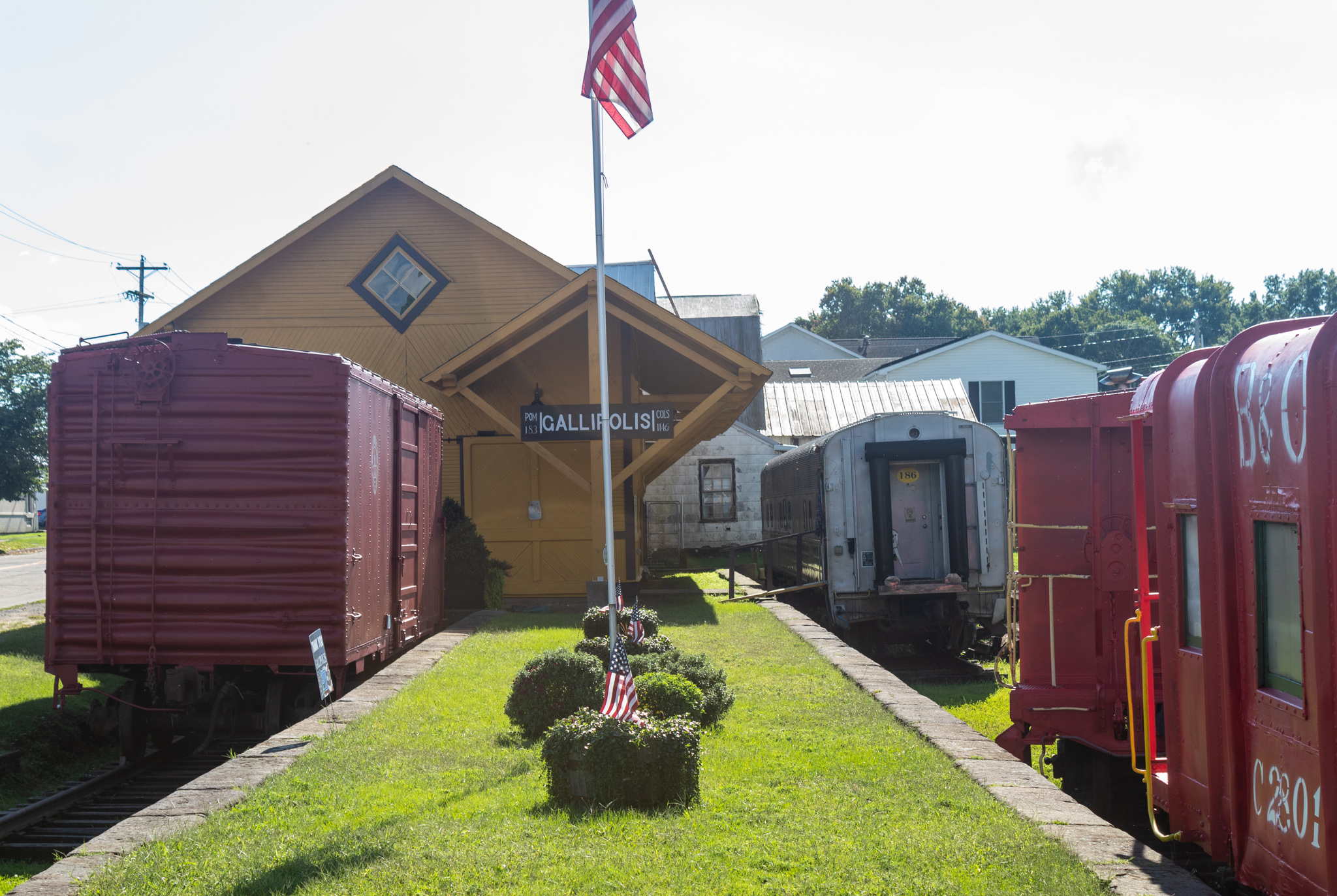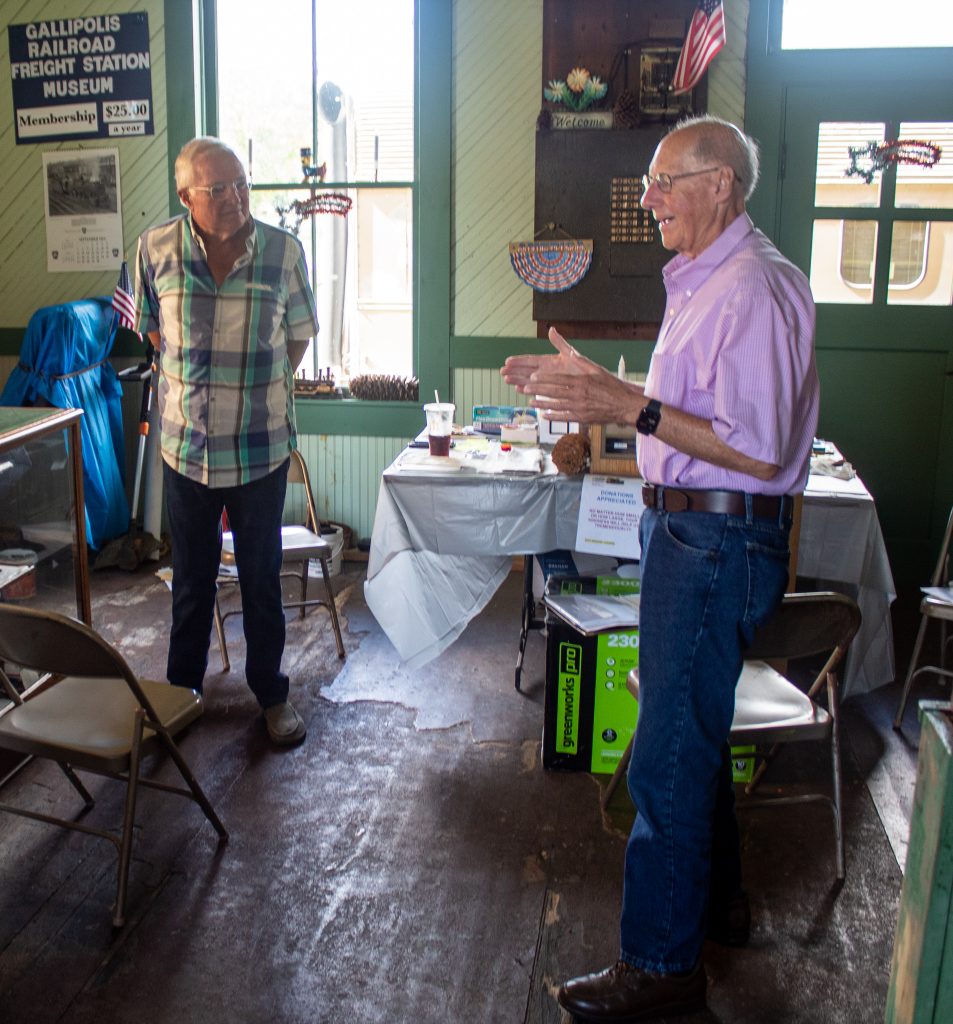
Retired railroad telegrapher Jim Love learned in 2016 that one of his former offices would be demolished and decided to save the building.
The Gallipolis Railroad Freight Station Museum is a volunteer organization who rescued the former Gallipolis Freight Station. The station, a medium-sized yellow structure made of wood, was erected in 1901 and used until 1981.
The station served the Hocking Valley Railway and its successors. A sign indicates it was 18.3 miles from the Pomeroy station and 114.6 miles from Columbus Union Station.
Love talked to to his friends Jerry Davis and the late Gary Burdette about converting the building. The city deeded the station to Love for $1. Love and friends formed a board of directors, elected officers and registered as a nonprofit. Love serves as president of the museum and Davis serves as vice president.
RAILROAD HISTORY MATTERS IN SOUTHEAST OHIO
Davis taught social studies for 42 years. He says railroads are a part of history that is sometimes passed over.
“If you don’t know your past, you cannot appreciate the present and you can’t foresee where you’re going into the future,” Davis says.
The Hocking Valley Railway connected Athens, Columbus, Toledo and Pomeroy. The railroad was merged into the Chesapeake and Ohio (C&O) in 1930. The line through Gallipolis was part of the River Division from Pomeroy to Logan.
The railroad carried coal as well as other goods and passengers. Love recalls seeing farm equipment and car parts, and even remembers Sears and Roebuck shipping an entire house.
“There was no such thing as UPS or any other home delivery,” Love says.
Love was born beside the railroad tracks in Corning and has enjoyed trains his entire life. He learned how to be a telegrapher from Cecil Sargent, who later worked as an agent at the Gallipolis Freight Station.
Love mainly worked at Kanauga beside the New York Central (NYC) and C&O. He met people on both railroads and would eat out with them at McDonald’s or some other place.
“Once you’re a railroader, you’re a clan,” Love says.

MUSEUM PRESERVES RAILROAD ROLLING STOCK, ARTIFACTS
There are several pieces of rolling stock outside the station in the yard. ‘Rolling stock’ refers to locomotives, passenger cars, freight cars, cabooses, etc.
A red Baltimore and Ohio (B&O) boxcar sits on one side of the former loading dock. A pair of red cabooses sit on the other side of the dock. One is a B&O caboose and the other is from the Southern Railway.
A 1945 Porter steam locomotive sits near the boxcar. Davis says the museum will soon have another. The other Porter locomotive is currently on the Hocking Valley Scenic Railway in Nelsonville. The rusty little locomotive has been stored in the yard there for nearly 40 years.
There is also a passenger car made of silver stainless steel. The car provided a home for trapeze artists travelling the country with the Ringling Bros. and Barnum and Bailey Circus.
The car’s interior needs some renovation, but enough remains to reflect its circus past. The dorm rooms are located down a narrow corridor and feature bunks, restrooms and kitchen appliances.
The depot’s interior has an office and freight house. The office is a small, green room. The freight house is a large room that is still being renovated. More than 4,000 Star Bricks make up the freight house’s floor.
Davis says the office area will be restored to be as original as possible. Love has working telegraph equipment that will be displayed. The freight house will also display railroad memorabilia. The artifacts will be moved into the station once the interior is finished.
Love wants to construct a model layout using parts that belonged to Burdette and were donated to the museum by his (Burdette’s) wife. Burdette was a model railroader and member of the National Model Railroad Association (NMRA).
While the museum’s work is done by volunteers, raising money to keep the museum’s doors open has been a challenge. Davis says local donations and grants have been helpful. Ohio Valley Bank has been supportive of the museum and donated $12,000 to the museum in April 2017.
Love says it feels good to preserve a place he once worked at and that it has been a job for him ever since.
“I work a day shift just like I was getting paid, but I’m not.”
